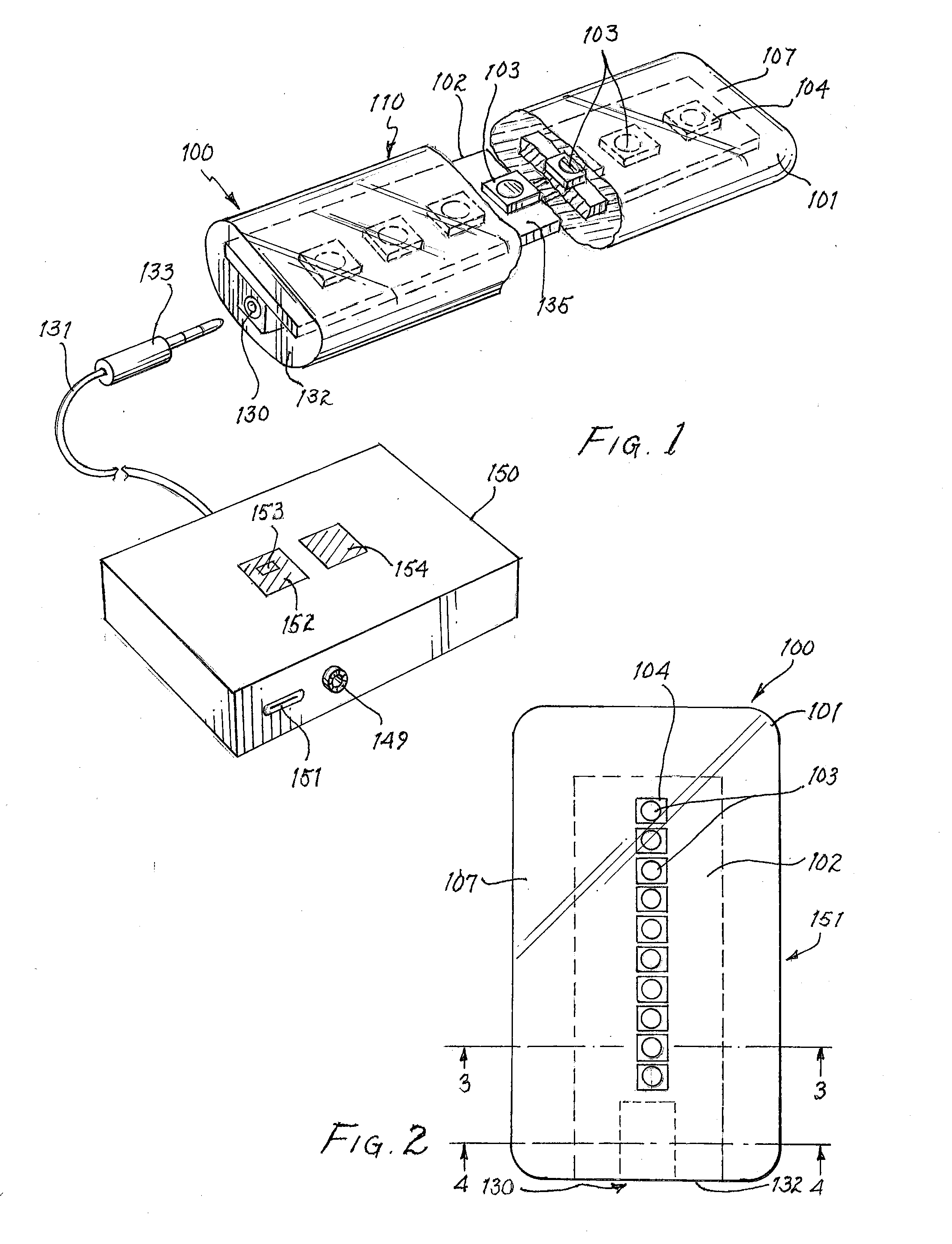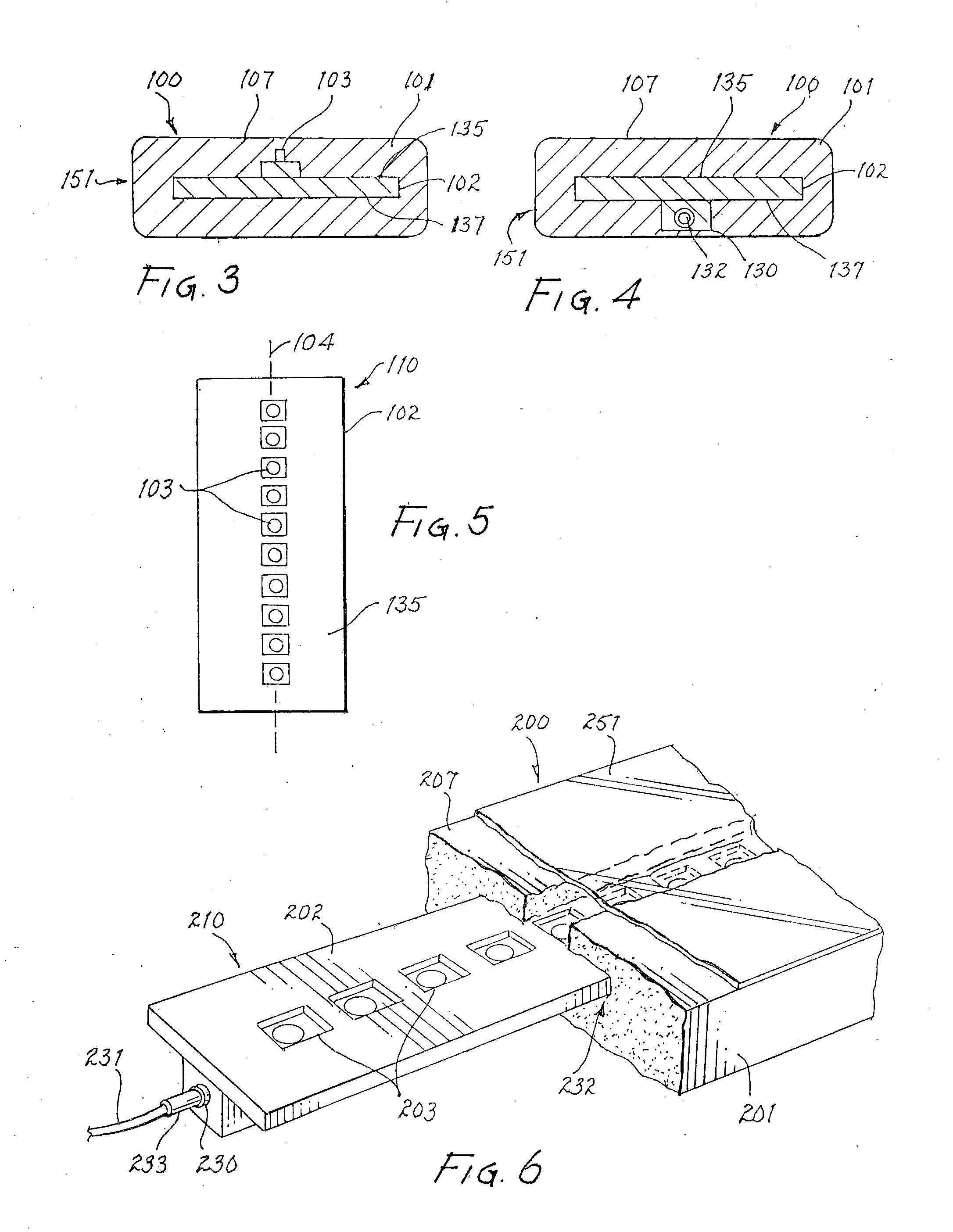Pediatric tissue illuminator
a tissue illumination and pediatric technology, applied in the field of medical imaging, can solve the problems of not always effective devices for locating veins, variations in skin tone, body fat and other physical characteristics, led trans-illuminators are not always effective for locating subcutaneously, etc., to facilitate tissue viewing, facilitate the effect of connecting and disconnecting, and quick and easy switching
- Summary
- Abstract
- Description
- Claims
- Application Information
AI Technical Summary
Benefits of technology
Problems solved by technology
Method used
Image
Examples
Embodiment Construction
[0047]FIGS. 1-5 illustrate a first preferred embodiment of an LED-based pediatric tissue illumination device, designated generally by reference numeral 100, in accordance with a preferred embodiment of the present invention. Pediatric tissue illumination device 100 preferably includes a low cost, disposable small arm board 110. Arm board 110 includes a surrounding padded layer 101 including a top surface 107 intended for direct contact with a patient's limb. Printed circuit board (“PC board”) 102 provides physical support for, and makes electrical connections to, a series of surface mount LEDs 103, and further serves to make arm board 110 more rigid.
[0048]Padded layer 101 can be made from any material that has translucent properties or partially translucent properties, such as a soft or hard clear plastic, nylon, silicone, or another similarly transparent medium. Preferably, padded layer 101 is formed from a soft, malleable, largely-transparent, plastic material that entirely surrou...
PUM
 Login to View More
Login to View More Abstract
Description
Claims
Application Information
 Login to View More
Login to View More - R&D
- Intellectual Property
- Life Sciences
- Materials
- Tech Scout
- Unparalleled Data Quality
- Higher Quality Content
- 60% Fewer Hallucinations
Browse by: Latest US Patents, China's latest patents, Technical Efficacy Thesaurus, Application Domain, Technology Topic, Popular Technical Reports.
© 2025 PatSnap. All rights reserved.Legal|Privacy policy|Modern Slavery Act Transparency Statement|Sitemap|About US| Contact US: help@patsnap.com



